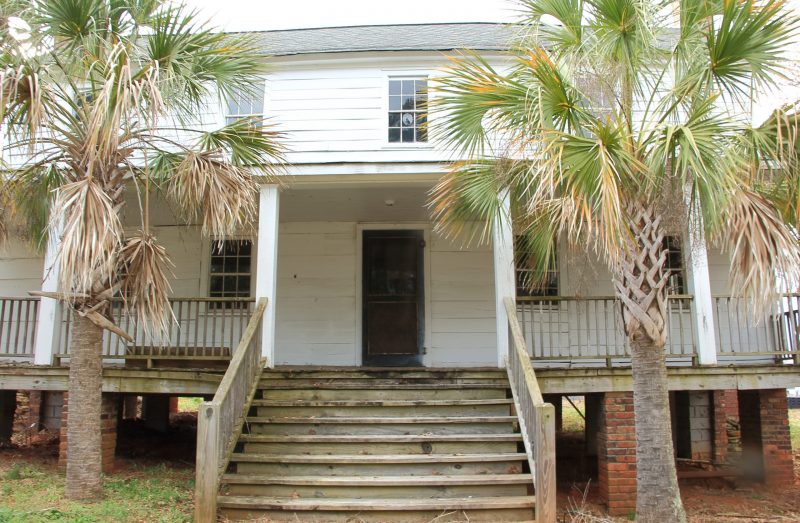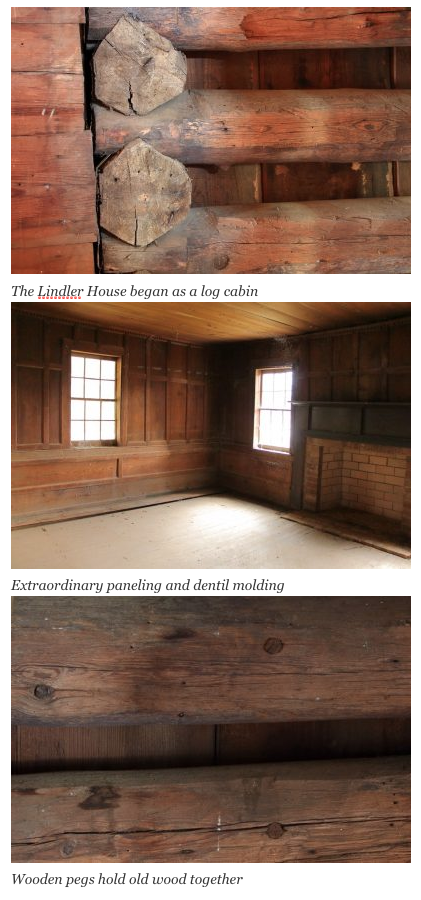The Lindler House, Beautiful Survivor
January 15, 2020By Tom Poland
It’s high noon at High Noon gift shop in Ballantine, South Carolina. I’m signing books when a lady approaches. “You write about old homes don’t you?”
“When I come across one I like.”
“Have you seen the Lindler House?”
“No, where is it?”
“Right around the corner.”
Those two questions led me to Juli Rhame who took me to the historic Lindler House, a beautiful survivor. “You need to call Michael Bedenbaugh, the executive director of Preservation South Carolina,” said Juli. “He knows the story.” I did and it’s a story of survival. First the home sat along the Broad River. Then it was moved to a site off Broad River Road.

The Lindler House
Taking a shortcut one day Michael saw the old two-story home through some trees. “I knew there had to be a log cabin inside it.” Then he saw a sign, “Walmart Coming Soon.” Michael and some folks sympathetic to the old home’s plight got the wheels moving and saved it.
“During 2008-2009 Preservation South Carolina moved the house 100 feet to the right to where it sits,” said Michael. “A grant from the Richland County Conservation Commission made it possible to move and stabilize the house. The National Trust for Historic Preservation provided funds and Walmart donated $10,000 as well. The home’s architecture is unique,” he added.

Indeed, it is. Solid as a rock, the old cabin was built to endure most anything. “The Lindler family built a log cabin shortly after the Revolution,” said Michael. “Since then, five generations have upgraded it such that it appears as it does today. One of the early upgrades was the addition of a loft.” He said the house has one of the most extraordinary rooms in Richland County. “The room has unique paneling with dentil molding.”
It’s a cliché, “If walls could talk,” but in the case of the Lindler House, the walls do talk. As I walked from room to room, I could hear pioneers discussing how best to make deft notches in logs. I could hear men hammering wood pegs as their mallets sent echoes across the Broad River. And that room with the unique paneling and dentil molding? I heard women planning meals as they sat in old rockers and sewed quilts. When I saw the handsome stairs, I heard aged wood creak as family members made their way upstairs.
Old fireplaces long warmed the home’s men, women, and children. Today stacked rock and brick form two modern-day chimneys for fireplaces that will burn gas logs. The house stands guard over the graves of the people who cared for it. “Like most pioneer families,” said Michael, “folks got buried behind the house.”
The home stands in its forever spot now, and as I looked at the chiseled logs, pegs, and exquisite molding I envisioned a conference center, a writer/artist retreat, law offices, clinic, and more. The warmth of old wood soothes the spirit in a way modern construction does not. And there’s something about old homes that render them sacred. We walk where others walked. We work where others worked, and we dream where others dreamed. In the case of the Lindler House, we follow those who built a log cabin that formed the heart of a historic house, a beautiful survivor.
Visit Tom Poland’s website at www.tompoland.net
Email Tom about most anything. [email protected]
Tom’s work appears in publications throughout the South. His books include South Carolina Country Roads, Classic Carolina Road Trips From Columbia, Georgialina, A Southland, As We Knew It, and Reflections of South Carolina, Vol. II. He writes about the South, its people, traditions, lifestyle, and culture. He’s member of the SC Humanities Speaker’s Bureau. Governor Henry McMaster conferred the Order of the Palmetto upon Tom for his body of work on South Carolina. Tom grew up in Lincoln County, Georgia, and graduated from the University of Georgia. He lives in Irmo, South Carolina.



















